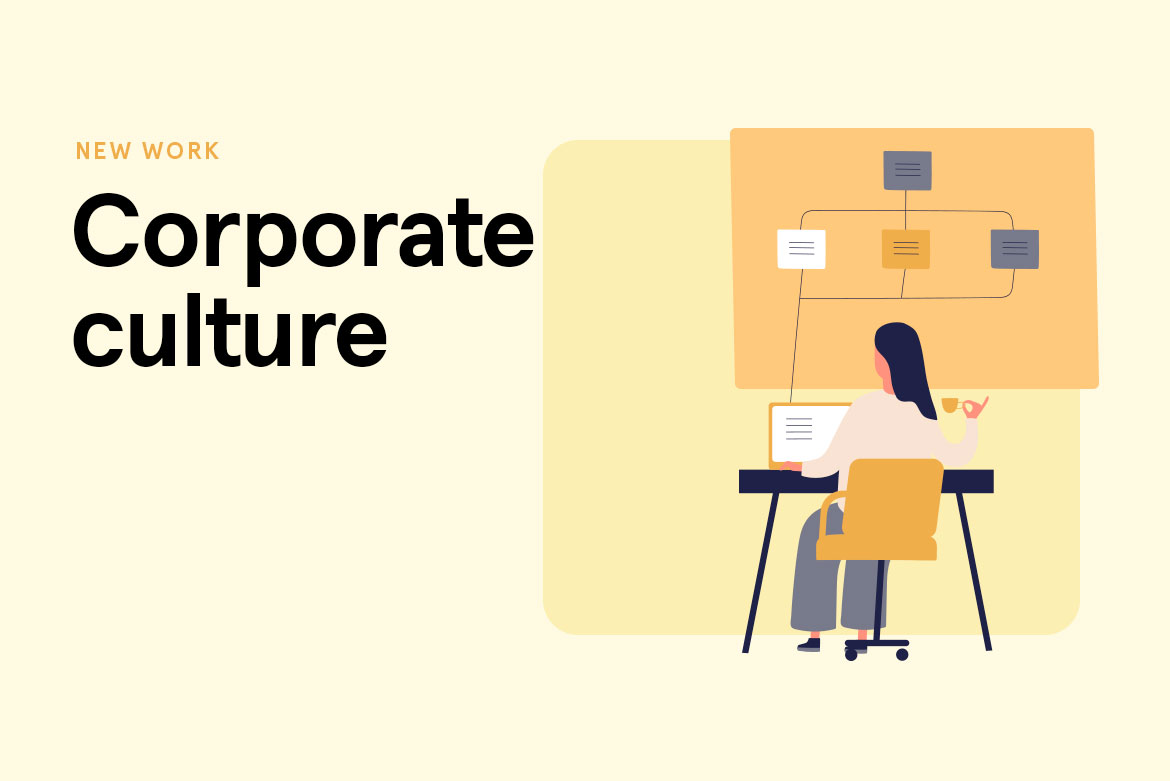In addition to New Work, many future-oriented, tech-savvy companies are exploring agility and agile project management. Agile processes promise more flexibility and speed, focusing on a customer-centric approach. But how do agile processes work, and how do they fit into New Work? We’ll tackle this and more here.
What is Agility?
Agile project management has become incredibly popular, especially in software development. Simply defined, agile conceives of a new way of project planning in organizations.

The concept of agility in project management dates back to the Agile Manifesto. Published in 2001 as the “Manifesto for Agile Software Development” by Kent Beck, Ken Schwaber, Jeff Sutherland and 14 other authors, the agile manifesto is based on these four basic values:
- Individuals and interactions stand above processes and tools.
- Functioning software takes precedence over comprehensive documentation.
- Collaborating with customers is more important than negotiating contracts.
- Reacting to change supersedes following a plan.
The four principles of agility
Agile work can take many forms, including Scrum, Kanban, Design Thinking and Lean Startup. Yet all individual forms share these agile principles, which distinguish agile methods from classic “waterfall” project management:
- Speed: Agility is intended to increase speed by, among other things, enabling a faster response to new requirements.
- Adaptability: Speed and adaptability are closely linked. Here, the idea is that external circumstances require dynamic reactions, which should be responded to at a fast pace. Decisions should be made and implemented quickly.
- Customer centricity: Individual products are broken down into sub-projects, interactions and cycles. This makes the product more digestible for the customer.
- Mindset: The leadership style and communication within the team are characterized by appreciation, transparency and personal responsibility.
The advantages of an agile approach
Agile organizations offer a variety of benefits, both internal and external.
External benefits
- Market flexibility: Agile organizations can react more flexibly to external factors and changes.
- Satisfied customers: By breaking down the overall project into sub-sections, it becomes more relatable and transparent to clients.
- Adaptation to digital environments: Agile began as a process for software development. By embracing it, companies remain competitive – especially in tech departments.
- Increased employer attractiveness: Showing that you work in a contemporary and future-oriented way – with speed, flexibility and customer-centricity – is a powerful motivation for potential employees to join your company.
- Better prospects for young talent: Job seekers in web development and IT in particular are trained in agile methods that they expect agility to be a part of any company they would work for.
Internal benefits
- Openness and transparency: Agile methods such as Scrum establish clear roles and processes.
- Flexibility and efficiency: When requirements change, agile makes it possible to work with what’s already there rather than starting from scratch.
- Good symbiosis with new management techniques: Agile methods invite ownership from all participants based on the product’s requirements.
- Open error culture: In agile, errors are not taboo, but rather part of the learning process. Feedback is welcome and can be given at regular intervals.
- Higher employee satisfaction: Clear distribution of roles, transparent communication and planning, and recurring feedback loops ensure high employee satisfaction.
Scrum – an overview
What exactly do agile methods look like in practice, and how does agile project management work? We provide an insight on this by looking at one of the most popular agile methods: Scrum.
What is Scrum?
Scrum is based on product development with iterative loops – or so-called “sprints”. Each sprint should produce an “increment” – a working partial product with a limited range of functions. If the end product is an app, for example, an increment could be the functioning log-in for users.
The project team can react quickly to changing requirements, collect feedback on individual increments from stakeholders, and thus arrive more quickly at a product that meets the client’s requirements. In classic project management, feedback would only be given when the final product is ready. This could mean that, in the event that the client is not satisfied, developers would need to start the project from scratch.
Elements from Scrum are also used in projects outside of software development, such as hardware or organizational development. For less complex projects with a clear and manageable scope, classic project management may be more useful.
Scrum Roles
Scrum works with a fixed distribution of roles and clear recurring meetings within a sprint. Classic Scrum team consists mainly of these three roles:
Product Owner: A product owner is, metaphorically speaking, the “owner” of the product. They are responsible for the development process, adding value to the product and communicating with stakeholders and/or customers. They manage the Product Backlog, the pool of tasks, and the Product Goal.
Scrum Master: Scrum Masters are responsible for the implementation of Scrum and compliance with Scrum guidelines detailed in the Scrum Guide. Scrum Masters are mediators and coaches – supporting processes and teams. They help both the product owner and the developers achieve their goals together. This promotes collaboration within the team and the organization.
Development team: The development team is a group of people who collaboratively implement a software, project, or even a service. Often, the team consists of employees of a company, but team members can also be external.
Scrum Events
In addition to pre-defined roles, there are fixed events in the sprint for all Scrum participants. In the Planning event, the scope and goal of the Sprint is discussed, individual tasks (or “stories”) are evaluated, the project scope is estimated, and resources are determined. Within a Sprint, many teams hold Stand-Up meetings every morning. They are done standing up, are often no longer than 10 minutes and exist only to clarify progress and any blockers. Towards the end of the Sprint, a review takes place. This is where the content of the past Sprint is discussed: Was the goal achieved? Did any difficulties arise and how can they be overcome? Also at the end of a Sprint, a Retro is scheduled. Here, the content of the past Sprint is not discussed – only the process and its strengths and weaknesses.
Agility und New Work – a match made in heaven
Agility and New Work are not mutually exclusive – in fact, it’s quite the opposite! Both go hand in hand, and are employed in tandem in learning organizations.
Companies that embrace agile methods and New Work have opted to champion a certain corporate culture, leadership styles, communication patterns and work organization. Most companies anticipate positive effects, including a good working atmosphere, high motivation, employer attractiveness, and satisfied employees and customers.
Agile concepts and methods such as Scrum or Kanban can support this. Both promote a new attitude towards work, constructive collaboration and relationships, transparent communication, an open error culture and continuous improvement.







